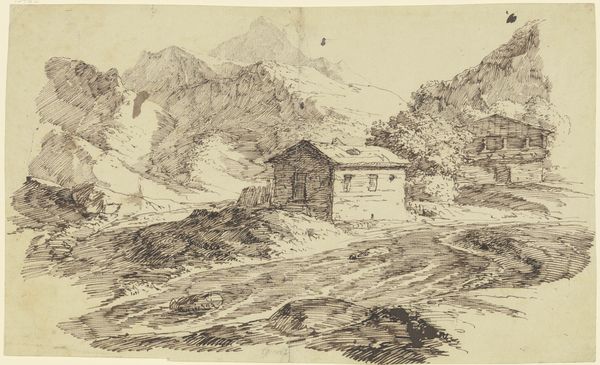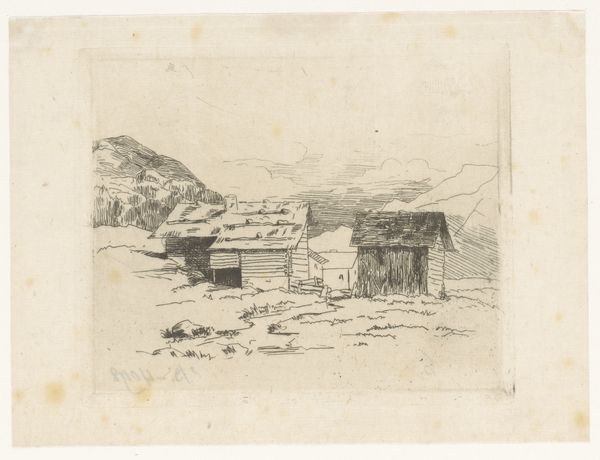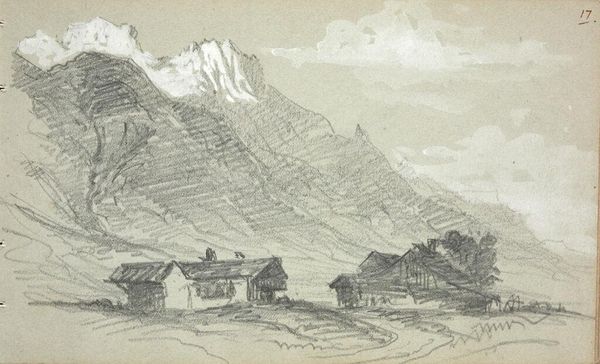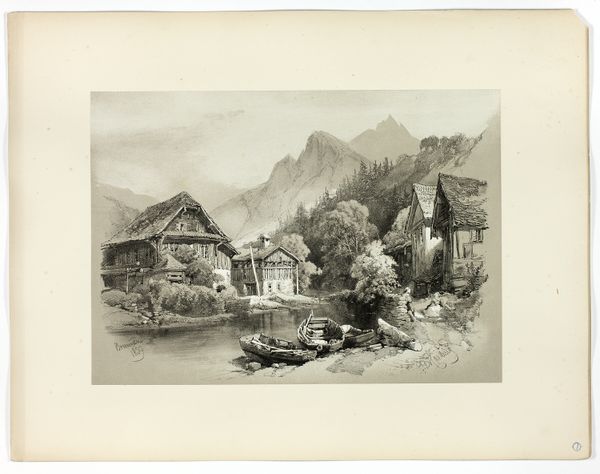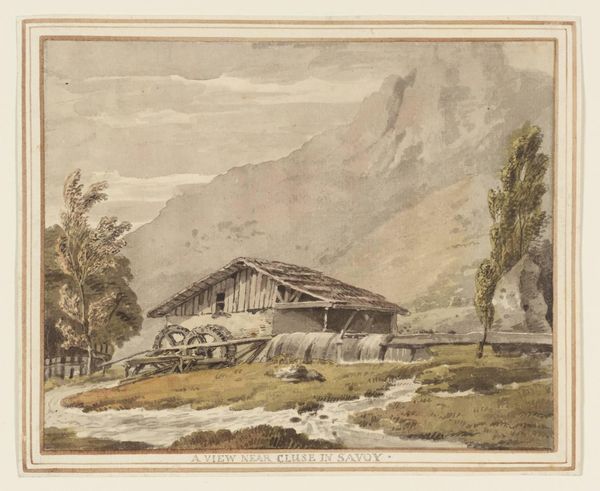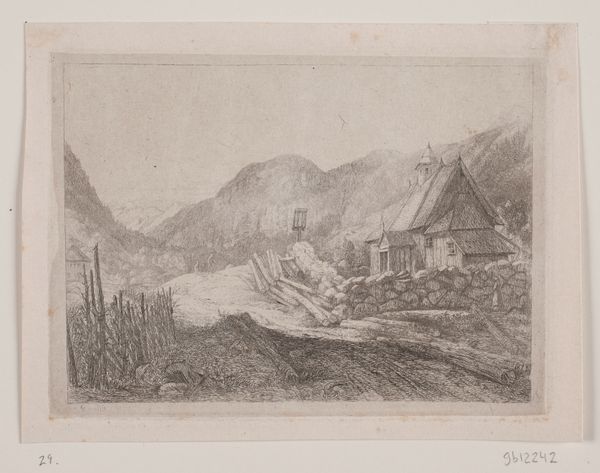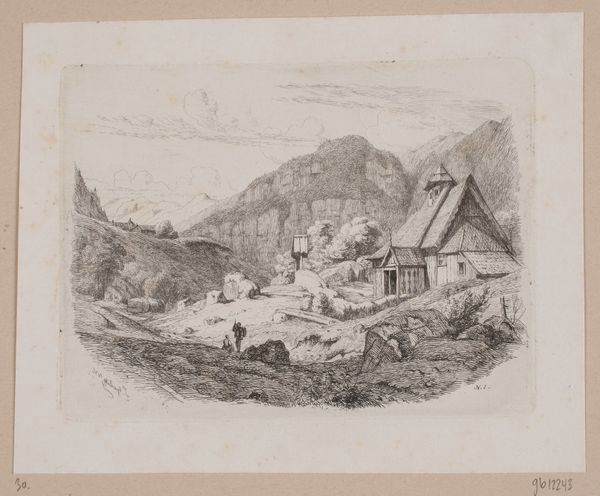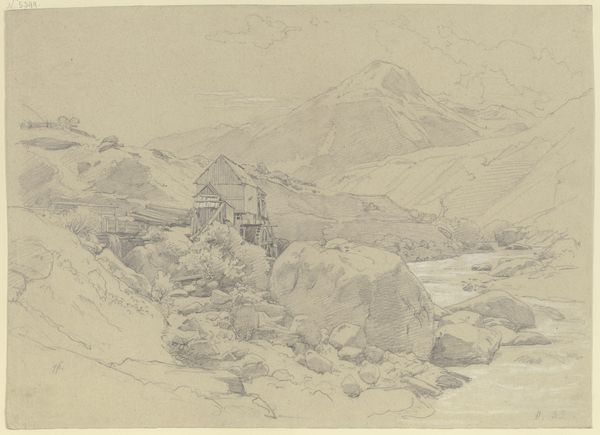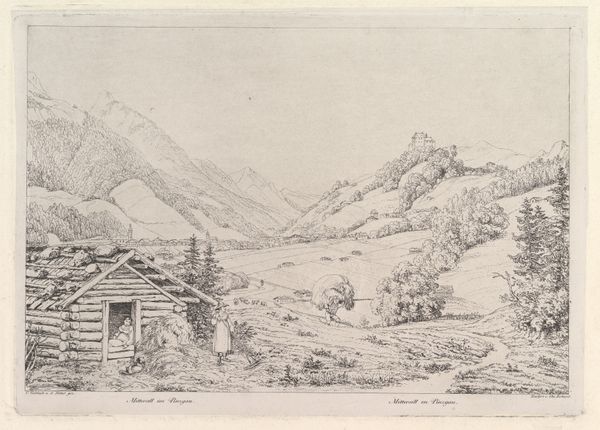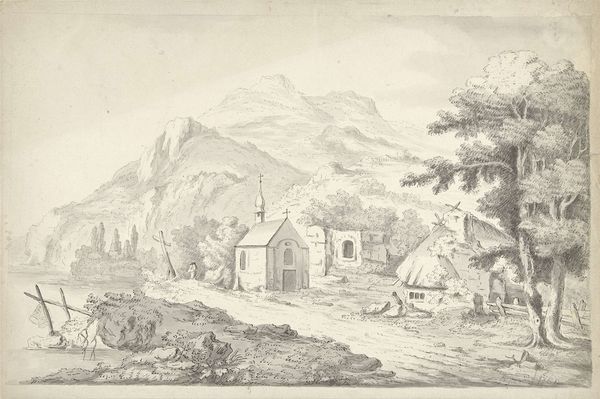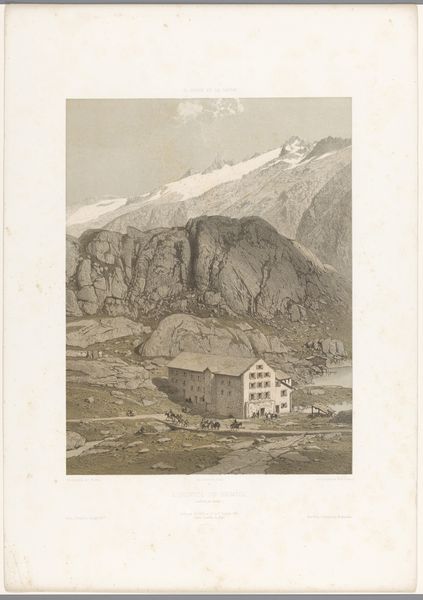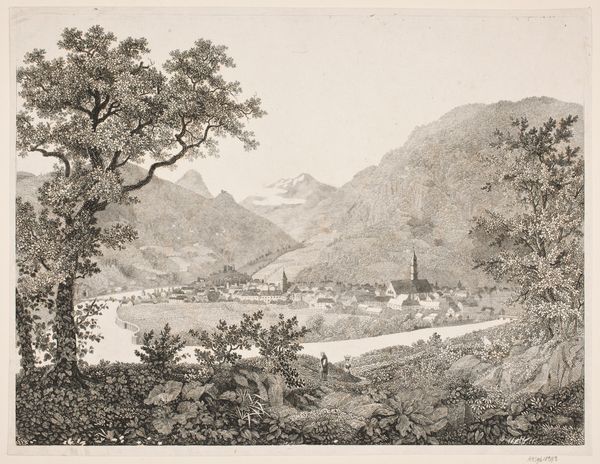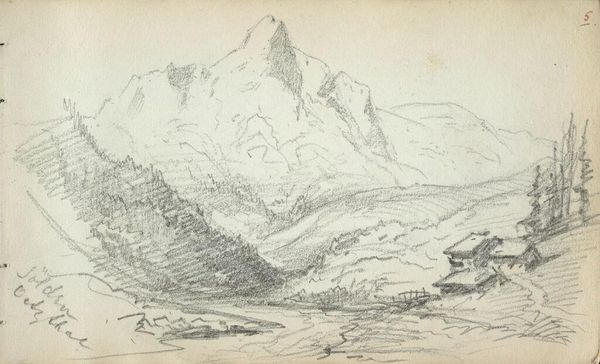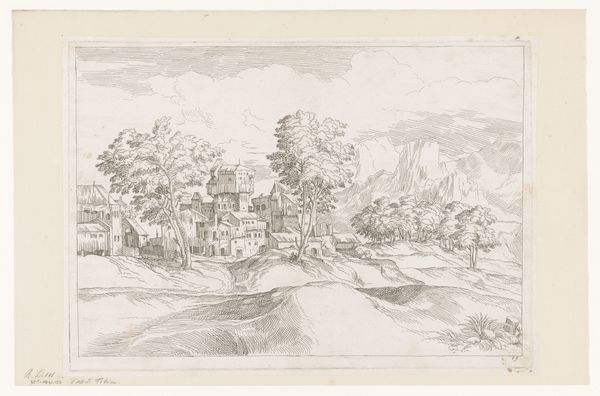
Dimensions: sheet: 18.42 × 24.77 cm (7 1/4 × 9 3/4 in.)
Copyright: National Gallery of Art: CC0 1.0
Curator: At first glance, this sketch is just a mood. Something hushed and secretive…like stumbling across a fairy-tale cottage on a very grey day. Editor: Indeed. This is John Singer Sargent's "Swiss Chalet," dating from 1869. Notice the precision of the drawing, achieved using pencil and etching techniques. It portrays a traditional building set against an imposing mountain range. It begs the question: Who did the chalet house, and who was it intended for? Curator: It does have a bit of a storybook vibe to it! It feels almost imposed on this massive natural scene, that looming mountain, swallowed in fog. Is this chalet meant to shelter humans or the spirits of the land? Editor: The Romantics sought precisely this sort of sublime connection between the individual and untamed nature. But it is vital that we contextualize that “untamed nature” and understand that the Romantic movement also had ties to colonialism. These landscapes are not pristine, ahistorical locales but rather sites with specific and complex economic and social dynamics at play. Who had access to these views? Curator: Hmm, fair point. The chalet looks both cozy and…exclusive, I guess. Like an escape, maybe. Somewhere to disconnect from the pressures of everyday life, perhaps the burgeoning industrial revolution… if only for a moment. And you know, as much as it feels complete in its rendering, that visible streak of the artist’s process reminds me that even something as grand as a Swiss chalet is really just a bunch of lines put together to suggest… an idea, I suppose? Editor: An idea tied explicitly to nineteenth-century societal currents—think anxieties over urban growth and class divisions. The construction of idyllic landscapes allowed the bourgeoisie and landed gentry to imagine escape, to distance themselves both literally and ideologically from the realities faced by those in industrialized cityscapes. It is therefore paramount that we think critically about how such images participate in maintaining hierarchical societal structures. Curator: Well, I will ponder all that! The more I see it, the more I feel like it encapsulates not just an individual moment in time, but a whole tension between man, architecture and the land itself. Editor: Indeed. This sketch by Sargent offers us more than just a pretty vista. It offers us a window, however small, into how 19th-century artistic productions simultaneously constructed and reflected cultural aspirations and socio-economic fault lines.
Comments
No comments
Be the first to comment and join the conversation on the ultimate creative platform.
